Daniele Costa (Castelfranco Veneto, 1992) began his artistic practice in 2014 focusing mainly on video. In 2015 he graduated from the University of Padua obtaining a first level degree in Disciplines of the Arts, Music and Performing Arts, he then completed his studies at the master’s degree course in Visual Arts at the Iuav University of Venice. His research focuses on the knowledge of the human body in two directions of personal introspection. On the one hand, the internal functioning of the human body, based on medical-scientific insights, on the other, the human singularity, the knowledge of the individual related to their history, their world and their person.
His projects have been presented in institutions and festivals such as PAC Contemporary Art Pavilion (Milan), MAXXI (Rome), Spinola Banna Foundation and GAM (Turin), National Gallery of Art Tirana (AL), House of King Peter I Belgrade (RS), Museum of Contemporary Art of Thessaloniki (SKG), Artevisione Careof and Sky Arte (Milan), Bevilacqua la Masa Foundation (Venice), Floating Cinema (Venice), Lago film Fest (Treviso).
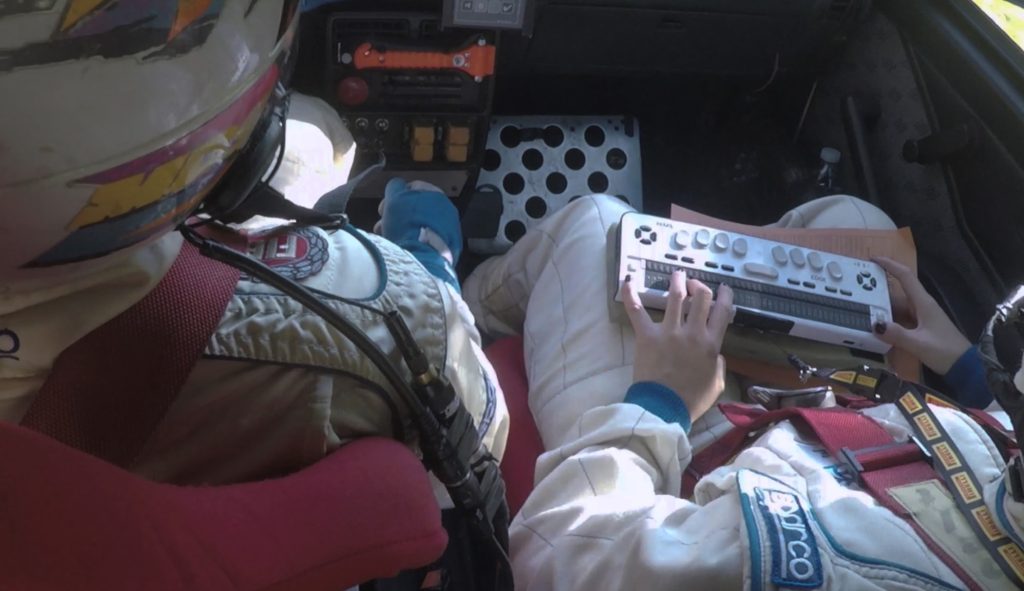
Ginevra Ludovici: How would you describe your artistic practice? Where does your research come from?
Daniele Costa: I am a visual artist who uses moving images to research. My path starts from studies related to cinema and then continues with the master’s degree in visual arts at the Iuav in Venice. My exploration starts from the body intending to translate parentheses of experience into film. I conceive the body as an overwriting of identity, a portion of complex matter which is given an individuality, the human singularity, and the reflections it projects in the narration of a collective history. The research stems from an imaginative conscience immersed in the desire to blend into the images. The studies in cinema combined with research in contemporary art have brought the need to immerse myself in the video medium in an investigation that has always become aware of the other by approaching it in an almost performative way, in search of a self that perhaps does not exist.
G.L.: You mainly work with film. Do you have any particular references that inspired your practice?
D.C.: I do not think there are any particular references, it is always a process of ‘walking by’, as the character of the Death said in Bergman’s Seventh Seal. Cinema happened in front of me, but I believe that everything then moved toward contemporary art. The video, for me, is a tool, a method of collection that becomes almost performativity. It is a writing process that is established in the relationship with the surrounding otherness in the spasmodic search for a self that perhaps does not exist, and that is why it becomes a path and an imaginative fascination, trying to delimit something that always escapes as if the urgency that I feel every time it is repeated and then necessarily disappear. There are many references in cinema, many in artists who use moving images in the contemporary: I like the idea of trespassing and losing labels that often create only non-existent enclosures.
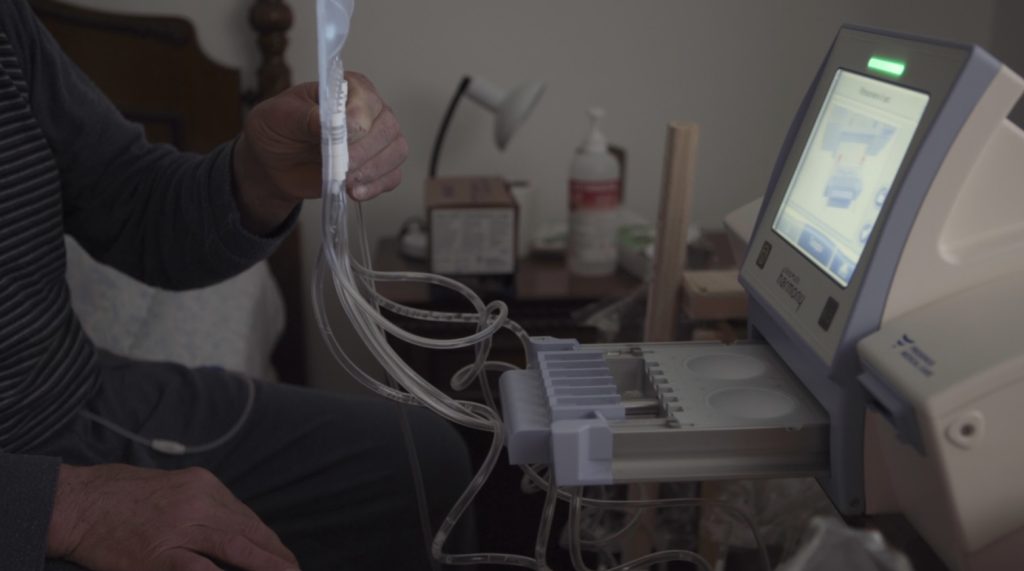
G.L.: Last year you were awarded the Lydia! Prize for contemporary emergent art by the Il Lazzaretto Foundation in Milan. Could you tell us more about this experience?
D.C.: The Il Lazzaretto Foundation is a beautiful reality full of stimuli. Through the call for proposals in memory of Lydia Silvestri, a sculptor who was a pupil of Marino Marini, the organization supports the search for emerging talents. In a past period like last year’s pandemic, the prize and the opportunity to work on the project were fundamental. Trapezia, the project presented, perfectly adhered to the theme of the Plague proposed in the announcement: an invitation to frequent the borders, to practice trespassing as an individual and collective transformative practice. In addition, the mentorship path with the artist Adrian Paci opened a common gaze of research into reality, a verbal Pantone that united the process of creation and immersion within the work.
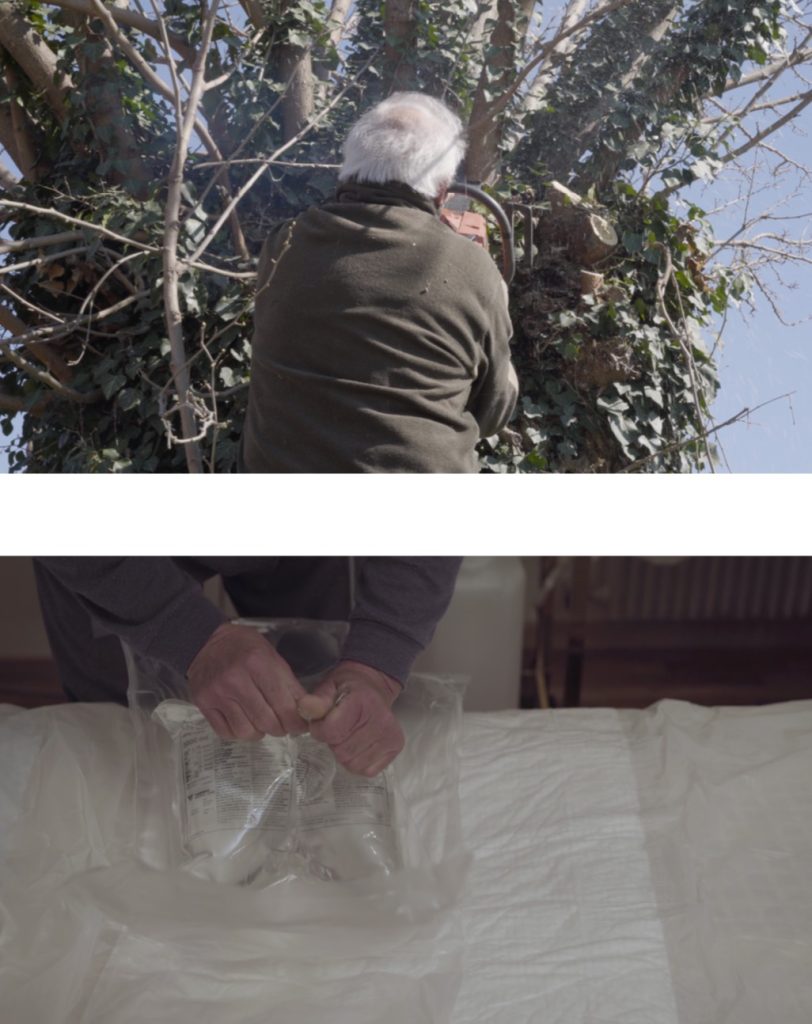
G.L.: Why did you decide to collaborate with La Trape/Aurelio? What did you want to grasp and communicate through this continuative and intimate dialogue? And how has this relationship between the two of you unfolded?
D.C.: I am very attached to this work, born about a year and a half ago when I met La Trape. The project is indeed based on the figure of Trapezia Stroppia, a drag queen of the Toilet Club in Milan, performer, artist, “girl from Porta Venezia” and another manifestation of Aurelio, who graduated in communication and art education at the Academy of Fine Arts of Brera. In today’s pandemic framework, La Trape, the stage name of Aurelio and the nickname of Trapezia Stroppia, has given life to a series of videos and live streams on her Instagram profile, performing inside her private home and working on the boundary between drag performance and tutorial parody. In doing so, she redefined not only the places of expression of her artifice drag (from the club to her private home) but also the roles and relational connections at play in a postmedia economy. The project starts from the will of representation of La Trape, a self that transforms and transposes itself into plurality. In this manifestation, the pandemic moment and the response to today’s contingencies that have excluded the physical presence from the possibilities of performative practices are examined: when the stage becomes virtual, our presence becomes more and more intangible until it becomes an “apparition.” In this way, a digital form is obtained to investigate in contrast to the physical person, to her fears and anxieties. The shooting space becomes the central fulcrum of the video work, the house where the Trape lives also becomes the set for her live streams, the setting for her stories, where Aurelio’s personal daily life blends with the will to perform live of La Trape. In rhythmic ups and downs that alternate hints of performances and intimate reflections, the video focuses on the infinite range of contradictions that thin the boundaries of the concept of the individual, continuously renegotiated and deconstructed. The crumbling of definitions and the necessary reconfiguration of the performative dimension in its essential relationship with the public sphere shatter binary thinking, problematizing even more explicitly categories and cultural opposites, such as reality / fiction, identity / otherness, nature / artifice, masculine / female.
Trapezia, from its initial conceptualization, is a fluid and melancholy journey into the unresolved, an immersion in the changing nature – of borders, categories, genres, and identities – from which the work itself takes strength; it is a legitimation of the threshold, of that interstitial and transitory space which is nevertheless a pulsating body alive with contradictions, second thoughts, desires. The relationship with Aurelio is something essential. At the end of the project, there is a mixture of unreal sensations, a continuously deconstructed but extremely aware reality, a different awareness within my research path.

Daniele Costa, Spazio morto, 2016

G.L.: Last summer, the work What do you sea? was released after a long-lasting collaboration with the multidisciplinary collective CampoBase. The project, supported by Video Sound Art and in collaboration with the Italian Touring Club Archive, resulted in a video installation staged at Piscina Cozzi, Milan, and in a slightly different reiteration of the event at Villa Romana, Florence. How did you find yourself in the dynamic of working with a polyphonic multitude such as CampoBase? What are your thoughts on collective practices?
D.C.: The project started from the idea of collaborating with CampoBase in a logic of relationship, production, and creation of a work together. CampoBase is a curatorial collective that encompasses the participation of different professional figures: working closely with them has brought the project to a higher level of awareness and vision. Sharing a path is a practice that I always try to bring inside my research, and, also, in this case, the encounter with the different individualities within the collective have triggered a process of maturation and mixing.
What do you sea? is part of the Cozzi swimming pool in Milan, which is not only the setting but also a pivotal element of the research. In fact, starting from the swimming pool itself, the research proposes an a-systematic approach to an archive, that of the Italian Touring Club, organized by precise geographies and temporalities. The archive is questioned with a transversal gaze that sets out on the trail of what is defined as “the sea of those who have no sea” in one of the Touring magazines themselves. Central to the investigation conducted between the Cozzi swimming pool architectures and the Touring funds is the experience of the surrogate of water, the aquatic and what is around it: sociability, the environment, and the city.
The surrogate is intended as a transformative tool of a modernity that is starting to radically change the face of the country in the years when the Cozzi was built – in the 1930s under the fascist regime – and not far from those in which the Touring Archive itself was born.
What do you sea? reconstructs the memories linked to the surrogate’s experience: on the mirror of the Cozzi Pool, images of trips to the lake and dry dips appear, alternated with film shootings of marine colonies and crowded coasts during the summer season.
Water is the material that the boundaries of the sea and what is not sea melt, this is the spatial element that holds together places and different temporalities. From the archive, visual and textual traces emerge, which, as in the process of building memory, come into contact with materials of different origins and form a continuous flow. A reciprocal gaze is thus activated: the present looks at the past and, at the same time, it is scrutinized by it.
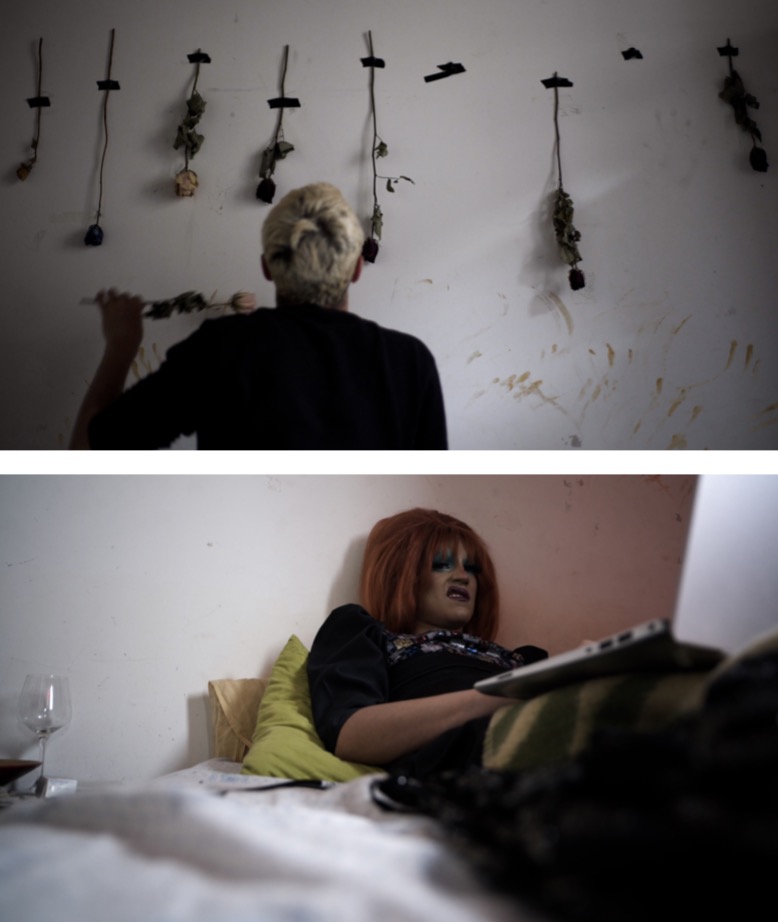
G.L.: When working with film, artists have to deal with long processes to get to the final output. If you look back at some of your older works, how do you feel about them? Is it meaningful for you to retrace a small trajectory of your life through the video productions you made?
D.C.: When I approached video at the beginning of my journey, there was a strong need and fascination regarding having time available, a new time for rewriting. Since the beginning of my path, I have always approached my work with a strong research base where the images arrived after months of sedimentation and incubation.
For Spazio Morto (2016), which I consider my first work, the research process lasted eight months. In this period, I spent days observing Papis, the project’s protagonist, on the beach of Lido di Venezia. In this context, I started a continuous observation of the cyclical nature of his time, of his space with no way out: there were only images and time.
With Il circuito, a piece presented for Artevisione 2017, we worked with Elisa, a blind girl since the age of 17 who is now a rally co-driver. With her, we tried to reconstruct her visual process during a rally race, the images that she managed to make appear in her head through the movement of her body on the cockpit seat and the reading of the race notes with her fingertips.
Harmony (2019), on the other hand, was a journey together with my father in his daily life elaborated through his clinical diary. He suffers from Alport syndrome, which causes severe kidney failure, and forces him to do peritoneal dialysis every night or hook to an external machine that cleanses his body. It consisted of seven days of shooting where the concrete and strong image realized during the day would crumble every night through the rituality of the connection to Harmony, the external machine for dialysis. X (2020) was a work that marked the introduction of a different narrative, made up of storytelling and layering. On the one hand, Doriano, a resident of Lago, a village of 1000 people in the heart of Veneto, and the lake, a postcard-worthy but at the same time disturbing entity. Doriano has always felt detached from the context: in the constant search for himself, he does not see himself in the logic of the village that distances him from being his own.
In all the projects carried out in recent years, the common thread has always been related to a search for a self, an interpretative and conditioned self that in the end never exists or changes in construction. The practice always pushes itself through the encroachment on the other, a constant path that changes and adjusts, where there is never a precise methodology but only urgent research.
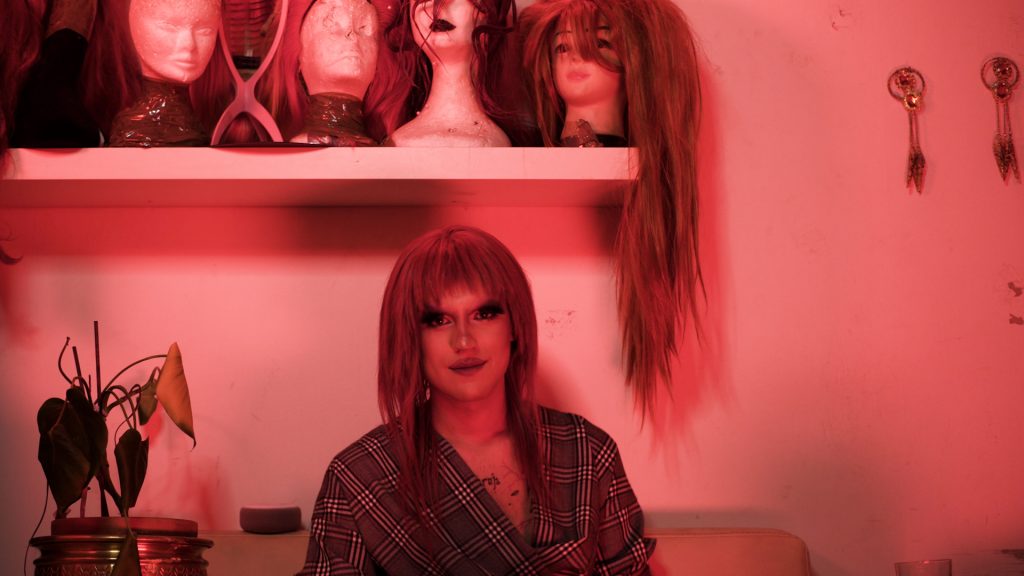
G.L.: What projects are you currently working on?
D.C.: After Trapezia and the work with La Trape, there is also a strong push that I would like to consume now that the piece will come out. Concentrating on the future is something that I have never done with my work, but I think it is necessary at this moment. I am really trying to hold together the pieces that emerged during the process of shooting with Aurelio / La Trape, it was all very intense. Now I would like to work on the idea of virtualization of the self, especially in this period, but maybe it is too early to talk about it. I always have the obsession with closing a work started in 2018 that deals with small interventions on the end of life in hospices.








